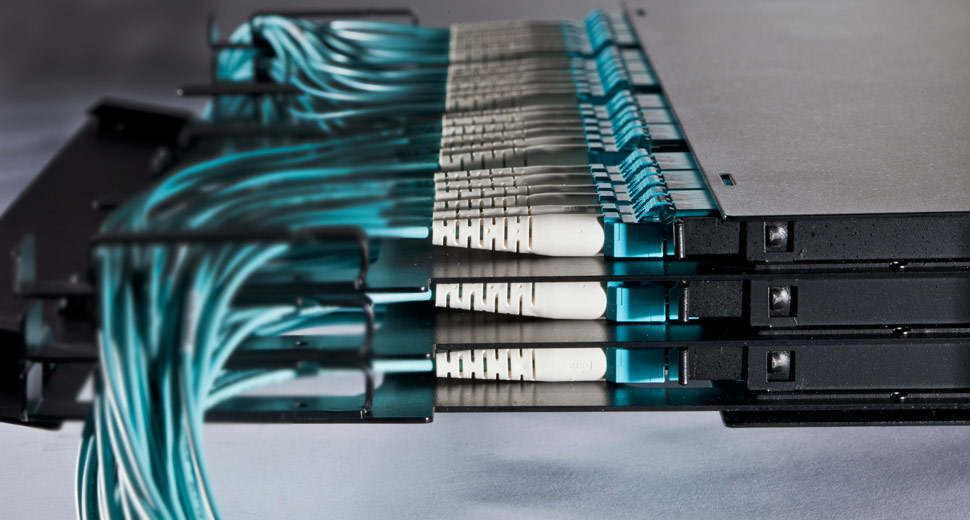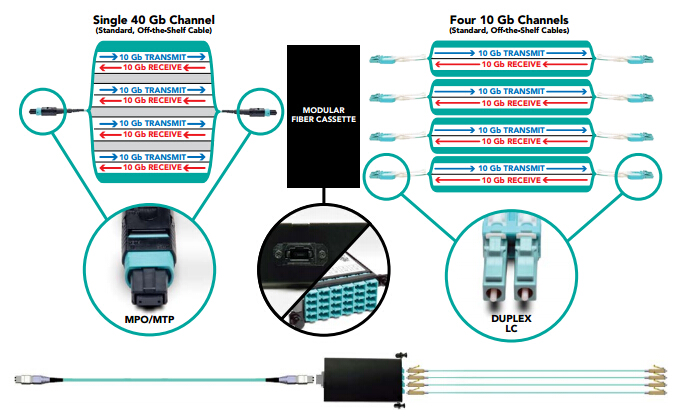Internet of Things (IoT) fuels the staggering growth of data transmission, making the volume of digital data to expand continuously. Meanwhile, user demand for faster access to all this data is increasing parallelly, therefore further contributing to the seemingly insatiable appetite for bandwidth. With 10G and 40G fiber serving as a commonplace in most data centers today, and it is high time to get your infrastructure prepared for the 100/120G and beyond to integrate higher network speeds. In this article, we’d like to offer module patch panel connectivity as an ideal solution to achieve this goal.
Tendency in Data Centers
When you are about to mix 10G and 40G equipment in your data center, you’d better ensure that the existing network of 10G servers and other devices can be connected to the higher-speed switches you are bringing in. And connectivity with future network standards should also be taken into account. While multiple speeds applications coexist in the same data center is not a fresh topic, the parallel optics cabling used for data transmission speeds of 40G and beyond does present a series of connectivity challenges.

Modular Patch Panel Solution Overview
Modular patch panels are comprised of rack-mountable enclosures designed to house a range of modular, removable fiber cassettes. Supporting various fiber network cabling standards, the cassettes are easy to mix, match, add and replace as your connectivity needs grow and change. Modular patch panels present an ideal way to create a standards-based, flexible, and reliable network platform in data centers.
The key to modular patch panels solution is modular fiber cassettes, which are available in multiple variations. The cassettes allow you to interconnect different fiber speeds simply by plugging standard duplex LC cables into one side of the cassette and one or more standard MPO/MTP cables into the other side.

Benefits and Challenges of Modular Patch Panel Solution
Like every other connectivity solutions, module patch panel solutions offer a range of benefits as well as Challenger.
Benefits:
- Integrate diverse cabling standards—modular patch panel solutions allow you to connect diverse network cabling standards seamlessly, including 10/10G, 10/40G, 40/40G, 10/100/120G and 40/100/120G, as well as future standards.
- Use standard patch cords—Since connections use standard patch cords that are readily available, you can make changes and repairs without the delays and added expense associated with custom cabling.
- Provide flexibility and scalability—as you integrate new cabling standards to support higher network speeds, you can simply swap existing cassettes with new cassettes that support the new standards. Your network can grow and change conveniently, without the costly, labor-intensive process of replacing channels end-to-end.
- Reduce cable congestion—reduced cable slack means less clutter, less confusion and an easily organized, better-labeled cabling infrastructure. You can also manage cables in any direction, be it horizontal or vertical, front or back.
- Support standards—modular patch panel solutions support ANSI/TIA-942 structured network cabling standards for data centers.
- Save space—by managing various port densities and speeds in a single high-density patch panel, you save valuable rack space, helping to lower data center costs. A single patch panel can manage as many as (168) 10G ports.
- Right-size investments—with a modular solution, you can buy and load only the cassettes you need now, while leaving room for future expansion.
Challenges:
The challenge, however, is to select a modular patch panel solution that best fits your demand: with the features and capacity to meet your current needs, and the flexibility and scalability to adapt to and grow with your future needs.
Conclusion
Modular patch panel solution provides a feasible and optimum way to network migration and upgrade, ensuring users to integrate equipment with different network speeds seamlessly and conveniently. As well as to satisfy connectivity needs for now and future-proof network for tomorrow.
Originally published: http://www.fiber-optic-solutions.com/patch-panel-solution-network-integration.html

No comments:
Post a Comment